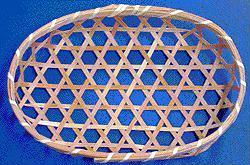Proved a theory from 1973 predicting the existence of a quantum magnetic fluid

The researchers of the Physics Faculty at the Technion, in collaboration with researchers from MIT, discovered a new state of aggregation of magnetic material in nature - this is what the scientific journal "Physics today" reveals in its latest issue. In doing so, the researchers proved a theory from 1973, which predicted the existence of a quantum magnetic fluid in a lattice with a triangular motif. The research also has a "Jewish angle", since the grid they used has the shape of "Magni David", which are next to each other and fill the space.
The Technion researchers, Professor Amit Keren and PhD student Oren Ofer, came to the discovery through experiments conducted at extremely cold temperatures, which do not exist naturally in the universe. With the help of special refrigerators, they reached a temperature of 50 thousand degrees Kelvin (273 degrees Celsius below zero). At this low temperature the magnet behaved as a quantum liquid, so called because the explanation for its existence is based on quantum theory. Similar results were reached by their colleagues at MIT, led by Professor Daniel Nusira. At the same time, a group of French researchers, led by Professor Philippe Mendels, also published similar findings.
"Materials in nature have one of the states of aggregation - gas, liquid, or solid, but at sufficiently low temperatures they all freeze and become solid," explains Professor Keren. "There is one exception, and that is helium, which if cooled does not freeze but turns into a unique state of aggregation called 'superfluid'. Such a liquid can, for example, climb up a glass, penetrate nanometric holes and even flow through another material."
Prof. Keren goes on to explain that "magnets, which are built from atomic compasses called 'spins' that are arranged on a lattice, also have different states of aggregation. The first, is a state corresponding to gas or liquid, in which the 'spins' are in motion, and is called a paramagnet. The second is a state corresponding to the solid, in which the 'spins' are frozen, and is called a ferromagnet (the kind that "sticks" to the fridge in the kitchen, and is familiar to all of us). Theories from 1973 predicted that in a certain type of magnets, consisting of a triangular lattice, there might even be the existence of another state of aggregation, corresponding to that of helium. In other words - a state of aggregation in which the magnet refuses to freeze even at temperatures that aspire to absolute zero."
Since this prediction, a worldwide effort has been made to find an example in nature of such a magnetic fluid. The new study probably points to the first example in nature of a quantum spin liquid. The Technion researchers cooled a magnet, built of "spins" on a wire similar to a collection of David's shields, to extreme temperatures, and it did not freeze. This discovery opens a door for future research of the quantum spin liquid and its properties.

7 תגובות
Very interesting and connects me directly with Marko Rodin's mathematical theory
http://www.youtube.com/watch?v=K93dL65Q724
Hey
Peace
Of course, the picture is not of the lattice itself, but a picture to illustrate the periodicity of the lattice. The article does not specify the size of the aggregate and how many atoms it contains, but it is certainly assumed that its size is in the nanometer range, the size of nanoparticles or nanocrystals.
Very interesting - can we have more material?
Father, what is the scale of the pattern in the picture? It looks like a fruit basket but I imagine it's nanoscale, no?
very interesting! I would be interested to know more about it. Where can I read more about this topic?